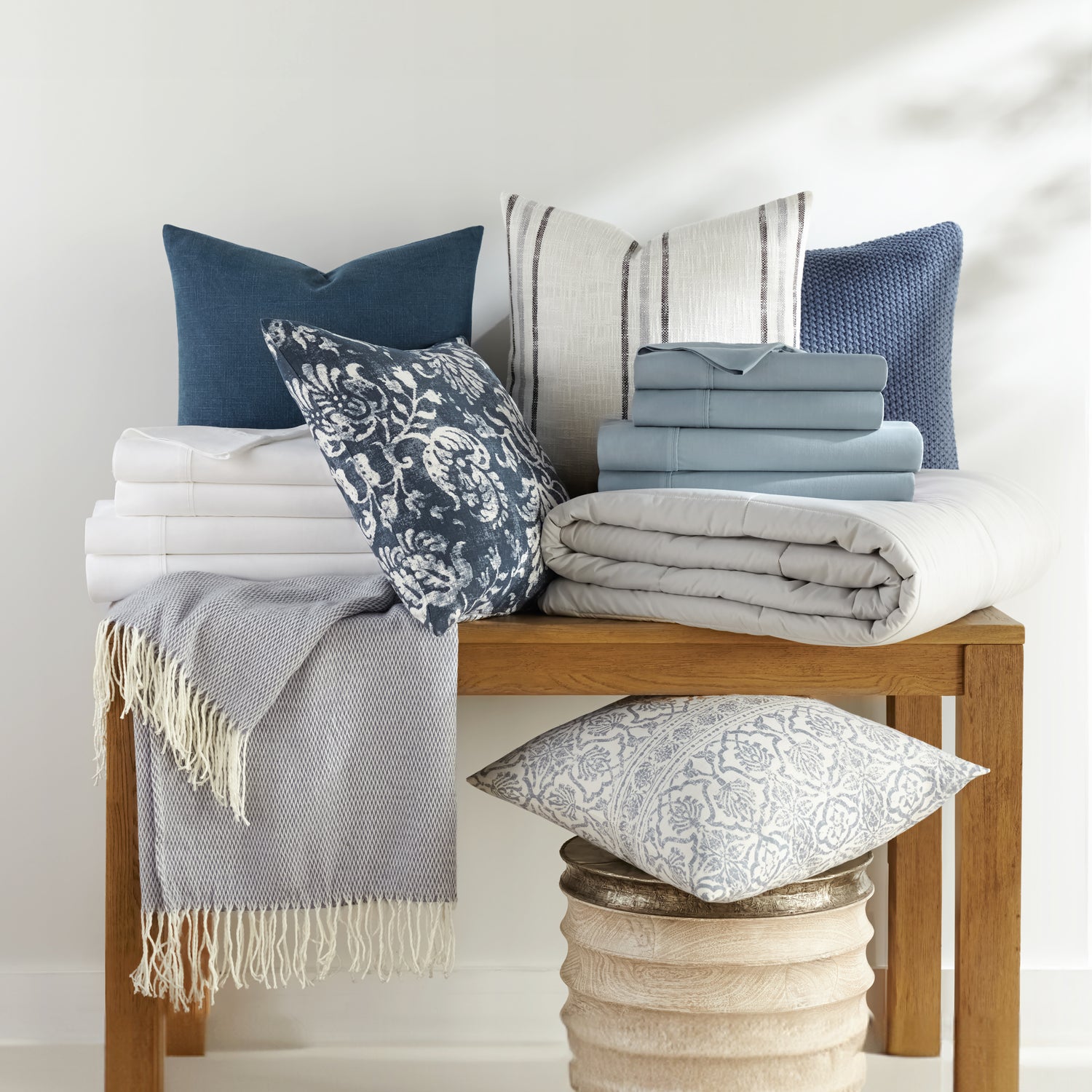Are Bamboo Sheets Good? The Benefits of Bamboo Sheets
A great night’s sleep starts with what’s under you. Ordinary bedding often falls short when it comes to comfort or breathability. That’s where bamboo sheets stand out. They offer softness, cooling, and eco-benefits all at once.
If you want bedding that feels luxurious and performs well night after night, you’ll want to read this. Let’s dive into what makes bamboo sheets worth considering.
Table Of Contents
- How Bamboo Sheets Are Made
- Benefits of Bamboo Sheets
- Types of Bamboo Sheets
- Luxurious Softness and Texture
- Cooling Comfort and Temperature Control
- Durability: How Long They Last
- Hypoallergenic and Health Benefits
- Eco-Friendly Qualities and Sustainability
- Care Tips for Lasting Comfort
- Conclusion
How Bamboo Sheets Are Made
The journey from a tall bamboo stalk to the soft sheets on your bed takes several steps. First, mature bamboo is harvested and broken down into a pulp. Depending on the method used, this pulp is processed into either rayon, viscose, lyocell, or sometimes blended with cotton. These fibers are what give bamboo sheets their smooth and breathable feel.
Once the fibers are ready, they’re spun into yarns, much like cotton or linen threads. From there, the yarns are woven into large rolls of fabric. The weave type—such as sateen or twill—plays a big role in how the sheets feel against your skin. After weaving, the fabric is cut and sewn into fitted sheets, flat sheets, and pillowcases. Finally, everything goes through finishing touches like softening, dyeing, or bleaching, so the sheets are ready to bring comfort straight to your bedroom.
Benefits of Bamboo Sheets
There are many benefits to bamboo sheets! First is softness. The fibers provide a smooth, gentle feel even for people with sensitive skin. Next is breathability. Air moves through the fabric more freely, so you stay cool when the weather is warm and comfortable when nights are cooler. Moisture wicking helps too: sweat is drawn away so fabric dries quickly, preventing dampness or a clammy feeling.
High-quality bamboo bedding keeps its shape and softness after many washes. Lastly, its growth is sustainable. Bamboo requires less water than many crops and often grows without pesticides, making it a more eco-friendly choice.
Types of Bamboo Sheets
Not all bamboo bedding is made the same. There are a few types you’ll see most often when shopping.
-
Bamboo Viscose (Rayon): The most common option. It feels silky smooth, drapes well, and offers excellent breathability.
-
Bamboo Lyocell: Made with a more eco-friendly closed-loop process. It has a soft, lightweight texture and is known for its durability.
-
Bamboo Linen: Produced mechanically with natural enzymes. It has a slightly coarser feel at first, but softens over time.
Each type has its own advantages. Viscose is prized for silky comfort. Lyocell balances softness with sustainability. Linen appeals to those who want something more natural and long-lasting.
Knowing the difference helps you pick the best fabric for your sleep style and values.
Luxurious Softness and Texture
The texture can make all the difference in your bed sheets. Fabrics made with a sateen weave often have a soft sheen and feel very smooth, while percale offers a crisp, cooler touch.
Brushed finishes add warmth but may feel more plush. All of these textures start softer thanks to the nature of the fiber used. Over time, the material will only get more comfortable with each wash.
Cooling Comfort and Temperature Control
Hot sleepers will notice a difference. The fiber structure lets heat escape and air flow freely. That means less night sweating and more consistent rest. In hotter climates or warm summer months, this lightweight feel helps you stay comfortable.
In cooler weather, the fabric still traps warmth without feeling heavy. For someone who wakes up too warm or too cold, this adaptability makes it a strong choice.
Durability: How Long They Last
One big advantage is lifespan. Smooth, long fibers resist tearing and pilling more than many shorter synthetic or low-grade cotton alternatives. If you wash gently, use mild detergent, and avoid harsh chemicals, the bedding will hold up well.
You’ll see less wear over time, fewer thin spots, and better value in the long run.
Hypoallergenic and Health Benefits
Bamboo sheets are great for those with bad allergies. The fabric resists dust mites, mold, and many common allergens more than other fibers do.
Its softness means less friction or irritation and a gentler feel on your skin. For many people, this means fewer nighttime flare-ups and a cleaner sleep environment overall.
Eco-Friendly Qualities and Sustainability
Being kind to the environment is part of what draws people in. Bamboo grows quickly with minimal water and often without the need for pesticides. Harvesting and converting it into fabric for bedding has lower environmental demands than many other crops.
If you care about sustainability, choosing bedding made from responsibly sourced bamboo can be a meaningful way to reduce your footprint.
Care Tips for Lasting Comfort
Even great bedding needs good care to stay great. Wash on a gentle cycle with mild detergent.
Avoid bleach and fabric softeners, which can damage the fibers.
Tumble dry on low or line dry to preserve softness and reduce wear. Store the sheets in a cool, dry place if not in use. Rotating the bedding occasionally helps even out wear over time.
Conclusion
So, are bamboo sheets good? Yes they sure are! They bring together softness, cooling comfort, and sustainability in a way that few other fabrics do.
If you want bedding that stays comfortable night after night for years, this could be a smart upgrade. Make sure to choose a quality weave, a style you like, and handle them with proper care.

